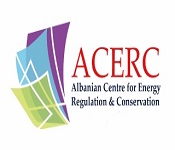Theme: Bioenergy: Upgrading sources of energy for future generation
Bioenergy 2017
Conferences series LLC invites all the participants from all over the world to attend 5th World Bioenergy Congress and Expo during June 29-30, 2017 in Madrid, Spain. Which includes prompt keynote presentations, Oral talks, Poster presentations and Exhibitions.
Theme of the Bioenergy conference is Upgrading sources of energy for future generation with an objective to encourage young minds and their research abilities by providing an opportunity to meet the experts in the field of Bioenergy. Bioenergy congress is designed to explore various applications in different fields.
ConferenceSeries Ltd organizes a conference series of 3000+ Global Events with over 600+ Conferences, 1200+ Symposiums and 1200+ Workshops in USA, Europe & Asia with support from 1000 more scientific societies and publishes 700+ Open access journals which contains over 30000 eminent personalities, reputed scientists as editorial board members.
Track 1: Biomass feed stocks for renewable energy generation
Biomass is the organic matter derived from plants which is generated through photosynthesis. In particular it can be referred to solar energy stored in the chemical bonds of the organic material. In addition to many benefits common to renewable energy, biomass is attractive because it is current renewable source of liquid transportation of biofuel. The Bioenergy Conference and Biofuel Conferences will optimize and enhance existing systems. However, biomass could play in responding to the nation's energy demands assuming, the economic and advances in conversion technologies will make biomass fuels and products more economically viable? The renewable energy policies in the European Union have already led to a significant progress, energy mix should further change till 2020.
Related Conferences
3rd Annual Congress on Biofuels and Bioenergy April 27-28, 2017 Dubai, UAE; International Conference on Chemical and Biochemical Engineering June 7-8, 2017 Milano, Italy; International Conference on Renewable Energy and Resources July 24-26, 2017 Vancouver, Canada; 6th International Conference on Petroleum Engineering June 29-30, 2017 Madrid, Spain; 4th World Congress on Biopolymers September 7-9, 2017 Paris, France; 19th International Conference on Bioenergy and Biorefineries, April 24-25, 2017, Boston, USA; International Conference on Biogas, March 8-11, 2017 Stuttgart, Germany; American Council on Renewable Energy, Renewable Fuels Association
Track 2: Biomass
Biomass is biological material derived from living, or recently living organisms. It most often refers to plants or plant-based materials which are specifically called lignocellulosic biomass. As an energy source, biomass can either be used directly via combustion to produce heat, or indirectly after converting it to various forms of biofuel. Conversion of biomass to biofuel can be achieved by different methods which are broadly classified into: thermal, chemical, and biochemical methods. Wood remains the largest biomass energy source to date; examples include forest residues (such as dead trees, branches and tree stumps), yard clippings, wood chips and even municipal solid waste. In the second sense, biomass includes plant or animal matter that can be converted into fibers or other industrial chemicals, including biofuels. Industrial biomass can be grown from numerous types of plants including miscanthus, switch grass, hemp, corn, poplar, willow, sorghum, sugarcane, bamboo, and a variety of tree species, ranging from eucalyptus to oil palm (palm oil). Biomass can be converted to other usable forms of energy like methane gas or transportation fuels like ethanol and biodiesel. There is research involving algal, or algae-derived, biomass due to the fact that it is a non-food resource and can be produced at rates five to ten times faster than other types of land-based agriculture, such as corn and soy. Using biomass as a fuel produces air pollution in the form of carbon monoxide, carbon dioxide, NOx (nitrogen oxides), VOCs (volatile organic compounds), particulates and other pollutants at levels above those from traditional fuel sources such as coal or natural gas in some cases (such as with indoor heating and cooking) Utilization of wood biomass as a fuel can also produce fewer particulate and other pollutants than open burning as seen in wildfires or direct heat applications. Black carbon – a pollutant created by combustion of fossil fuels, biofuel, and biomass – is possibly the second largest contributor to global warming.
Related Conferences
International Conference on Chemical and Biochemical Engineering June 7-8, 2017 Milano, Italy; 3rd Annual Congress on Biofuels and Bioenergy April 27-28, 2017 Dubai, UAE; International Conference on Renewable Energy and Resources July 24-26, 2017 Vancouver, Canada; Alternative & Renewable Energy Quest in Architecture and Urbanism, February 1-3, 2017 Barcelona, Spain; Waste-to-bioenergy Application in Urban Areas, January 19-20, 2017 Paris, France; American Council on Renewable Energy, Renewable Fuels Association
Track 3: Bioenergy Conversion
The process to convert biomass solid raw material to fuel gas or chemical feedstock gas (syngas) is called gasification. Chemical conversion of gas would be expensive and there are microorganisms that can convert the CO, H(2), and CO(2) gas to fuels. The discovery of organisms which are capable of higher product yield, as metabolic engineering of microbial catalyst, will make this technology a viable option for reducing our dependency on fossil fuels. Different conversion methods are gas production, Pyrolysis , Anaerobic digestion, Biorefineries, Bioethanol production and sugar release from biomass. A new Bioenergy International aimed at developing countries is now on the horizon.
Related Conferences
International Conference on Renewable Energy and Resources July 24-26, 2017 Vancouver, Canada; International Conference on Chemical and Biochemical Engineering June 7-8, 2017 Milano, Italy; 3rd Annual Congress on Biofuels and Bioenergy April 27-28, 2017 Dubai, UAE; Fuels of the Future, January 23-24, 2017 Berlin, Germany; International Conference on Biofuels and Biorefining Technologies, January 30-31, 2017 Dubai, UAE; National Biodiesel Conference, January 16-19, 2017 San Diego, CA; American Council on Renewable Energy, Renewable Fuels Association
Track 4: Renewable Energy
Renewable energy is energy that is generated from natural processes that are continuously replenished. This includes sunlight, geothermal heat, wind energy, tides, water, and various forms of biomass. This energy cannot be exhausted and is constantly renewed. Biomass, is a renewable organic matter, and can include biological material derived from living, or recently living organisms, such as wood, waste, and alcohol fuels.
Related Conferences
3rd Annual Congress on Biofuels and Bioenergy April 27-28, 2017 Dubai, UAE; International Conference on Chemical and Biochemical Engineering June 7-8, 2017 Milano, Italy; International Conference on Renewable Energy and Resources July 24-26, 2017 Vancouver, Canada; American Council on Renewable Energy, Renewable Fuels Association; World Sustainable Energy Days – European Pellet Conference, March 1-2, 2017 Weiss, Austria; International Biomass Expo, March 1-3, 2017 Tokyo, Japan ; International Conference Progress in Biogas, March 8-11, 2017 Stuttgart, Germany;
Track 5: Bioenergy Transition
Biomass plant material and animal waste IS used to create transportation fuels and generate electricity. Biomass energy is derived from plant-based material and solar energy has been converted into organic matter. Biomass can be used in a variety of energy-conversion process to yield power, heat, steam, and fuel. Biomass is used by food processing industries, animal feed industry, and wood products industry, which includes construction and fiber products (paper and derivatives), along with chemical products made from these industries that have diverse applications including detergents, biofertilizers, and erosion control products. The biggest opportunity for the global bioenergy technology is the increasing demand for electricity across the world.
Related Conferences
International Conference on Chemical and Biochemical Engineering June 7-8, 2017 Milano, Italy; 3rd Annual Congress on Biofuels and Bioenergy April 27-28, 2017 Dubai, UAE; International Conference on Renewable Energy and Resources July 24-26, 2017 Vancouver, Canada; American Council on Renewable Energy, Renewable Fuels Association; Fuels of the Future, January 23-24, 2017 Berlin, Germany; International Conference on Biofuels and Biorefining Technologies, January 30-31, 2017 Dubai, UAE; National Biodiesel Conference, January 16-19, 2017 San Diego, CA;
Track 6: Processes for Bioenergy
Bio-carbon liquid, biofuel and gas are the products of thermal decomposition of biomass. Gasification process is conducted to ordinary reactors or in reactors with a fluidal field. During hydrothermal gasification process, hydrogen energy, carbon oxide and some amount of methane and superior hydrocarbons are produced. Liquids derived from biomass resources such as ethanol and bio-oils can be reformed to produce hydrogen in a process similar to natural gas reforming. Biomass derived liquids can be transported more easily than biomass feed stocks. The bioenergy technology faces challenges in terms of technological assistance, economics and knowledge.
Related Conferences
International Conference on Renewable Energy and Resources July 24-26, 2017 Vancouver, Canada; International Conference on Chemical and Biochemical Engineering June 7-8, 2017 Milano, Italy; 3rd Annual Congress on Biofuels and Bioenergy April 27-28, 2017 Dubai, UAE; World Sustainable Energy Days – European Pellet Conference, March 1-2, 2017 Weiss, Austria; International Biomass Expo, March 1-3, 2017 Tokyo, Japan ; International Conference Progress in Biogas, March 8-11, 2017 Stuttgart, Germany; American Council on Renewable Energy, Renewable Fuels Association
Track 7: Biogas
Biogas typically refers to a mixture of different gases produced by the breakdown of organic matter in the absence of oxygen. Biogas can be produced from raw material testing such as agricultural waste, manure, municipal waste, plant material, sewage, green waste or food waste. It is a renewable energy source and in many cases exerts a very small carbon footprint.
Related Conferences
International Conference on Chemical and Biochemical Engineering June 7-8, 2017 Milano, Italy; 3rd Annual Congress on Biofuels and Bioenergy April 27-28, 2017 Dubai, UAE; International Conference on Renewable Energy and Resources July 24-26, 2017 Vancouver, Canada; Fuels of the Future, January 23-24, 2017 Berlin, Germany; International Conference on Biofuels and Biorefining Technologies, January 30-31, 2017 Dubai, UAE; National Biodiesel Conference, January 16-19, 2017 San Diego, CA; American Council on Renewable Energy, Renewable Fuels Association
Track 8: Biodiesel
Biodiesel is a renewable, clean-burning diesel replacement that is reducing U.S. dependence on foreign petroleum, creating jobs and improving the environment. Made from a diverse mix of feedstocks including recycled cooking oil, soybean oil, and animal fats, it is the first and only EPA-designated Advanced Biofuel in commercial-scale production across the country and the first to reach 1 billion gallons of annual production. Meeting strict technical fuel quality and engine performance specifications, it can be used in existing diesel engines without modification and is covered by all major engine manufacturers’ warranties, most often in blends of up to 5 percent or 20 percent biodiesel. It is produced at plants in nearly every state in the country.
Related Conferences
3rd Annual Congress on Biofuels and Bioenergy April 27-28, 2017 Dubai, UAE; International Conference on Chemical and Biochemical Engineering June 7-8, 2017 Milano, Italy; International Conference on Renewable Energy and Resources July 24-26, 2017 Vancouver, Canada; American Council on Renewable Energy, Renewable Fuels Association; World Sustainable Energy Days – European Pellet Conference, March 1-2, 2017 Weiss, Austria; International Biomass Expo, March 1-3, 2017 Tokyo, Japan ; International Conference Progress in Biogas, March 8-11, 2017 Stuttgart, Germany;
Track 9: Biofuels
Biofuels are produced from living organisms or from metabolic by-products (organic or food waste products). In order to be considered a biofuel the fuel must contain over 80 percent renewable materials. It is originally derived from the photosynthesis process and can therefore often be referred to as a solar energy source. Biofuels are not new. There are several factors that decide the balance between biofuel and fossil fuel use around the world. Those factors are cost, availability, and food supply.
Related Conferences
International Conference on Chemical and Biochemical Engineering June 7-8, 2017 Milano, Italy; 3rd Annual Congress on Biofuels and Bioenergy April 27-28, 2017 Dubai, UAE; International Conference on Renewable Energy and Resources July 24-26, 2017 Vancouver, Canada; Fuels of the Future, January 23-24, 2017 Berlin, Germany; International Conference on Biofuels and Biorefining Technologies, January 30-31, 2017 Dubai, UAE; National Biodiesel Conference, January 16-19, 2017 San Diego, CA; American Council on Renewable Energy, Renewable Fuels Association;
Track 10: Bioenergy Applications
Bioenergy is conversion of biomass resources such as agricultural and forest residues, organic municipal waste and energy crops to useful energy carriers including heat, electricity and transport fuels. Biomass is increasingly being used for modern applications such as dendro-power, co-generation and Combined Heat and Power generation (CHP). Depending on the resource availability and technical, economic and environmental impact, these can be attractive alternatives to fossil fuel based applications. Bioenergy, a renewable energy resource particularly suitable for electricity, heating & cooling in transport, will be at the core of this sectorial shift in renewable energy production and use and is expected to become the dominant form of RES before 2020.
Related Conferences
3rd Annual Congress on Biofuels and Bioenergy April 27-28, 2017 Dubai, UAE; International Conference on Chemical and Biochemical Engineering June 7-8, 2017 Milano, Italy; International Conference on Renewable Energy and Resources July 24-26, 2017 Vancouver, Canada; World Sustainable Energy Days – European Pellet Conference, March 1-2, 2017 Weiss, Austria; International Biomass Expo, March 1-3, 2017 Tokyo, Japan ; International Conference Progress in Biogas, March 8-11, 2017 Stuttgart, Germany; American Council on Renewable Energy, Renewable Fuels Association
Track 11: Bioethanol
The principle fuel used as a petroleum substitute is bioethanol. Bioethanol is mainly produced by the sugar fermentation process, although it can also be produced by the chemical process of reacting ethylene with steam. The main source of sugar required to produce ethanol comes from fuel or energy crops. These fuel crops are normally grown specifically for energy use and include maize, corn and wheat crops, waste straw, willow, sawdust, reed canary grass, cord grasses, Jerusalem artichoke, Myscanthus and sorghum plants. There is also ongoing research and development into the use of municipal solid wastes to produce ethanol fuel. Brazil and the United States account for over 70 percent of all ethanol production in the world today with the USA producing an estimated 6,500 Million gallons a year. Bioethanol produces only carbon dioxide and water as the waster products on burning, and the carbon dioxide released during fermentation and combustion equals the amount removed from the atmosphere while the crop is growing This fuel is not suitable for use in all cars and you should check compatibility with your vehicle manufacturer before using it. If in doubt use the standard SP95 or SP98 Octane unleaded fuel which continues to be available alongside the new fuel. Researchers have recently launched a proposal to cultivate massive amounts of seaweed or algae. They laims that the project could occupy about ten thousand kilometers of seaweed farm and they estimated that the farm would be able to produce bioethanol from algae, as much as 20 million kiloliters or 5.3 billion gallons of bioethanol per year.
Related Conferences
International Conference on Renewable Energy and Resources July 24-26, 2017 Vancouver, Canada; International Conference on Chemical and Biochemical Engineering June 7-8, 2017 Milano, Italy; 3rd Annual Congress on Biofuels and Bioenergy April 27-28, 2017 Dubai, UAE; Fuels of the Future, January 23-24, 2017 Berlin, Germany; International Conference on Biofuels and Biorefining Technologies, January 30-31, 2017 Dubai, UAE; National Biodiesel Conference, January 16-19, 2017 San Diego, CA; American Council on Renewable Energy, Renewable Fuels Association
Track 12: Biomass Technology
Biomass technologies break down organic matter to release stored energy from the sun. The process used depends on the type of biomass and its intended end-use. There are a number of technological options available to make use of a wide variety of biomass types as a renewable energy source. Conversion technologies may release the energy directly, in the form of heat or electricity, or may convert it to another form, such as liquid biofuel or combustible biogas. While for some classes of biomass resource there may be a number of usage options, for others there may only one appropriate bioenergy technology.
Related Conferences
International Conference on Chemical and Biochemical Engineering June 7-8, 2017 Milano, Italy; 3rd Annual Congress on Biofuels and Bioenergy April 27-28, 2017 Dubai, UAE; International Conference on Renewable Energy and Resources July 24-26, 2017 Vancouver, Canada; American Council on Renewable Energy, Renewable Fuels Association; World Sustainable Energy Days – European Pellet Conference, March 1-2, 2017 Weiss, Austria; International Biomass Expo, March 1-3, 2017 Tokyo, Japan ; International Conference Progress in Biogas, March 8-11, 2017 Stuttgart, Germany;
Conference series LLC invites all the participants from all over the world to attend 5th World Bioenergy Congress and Expo during June 29-30, 2017 in Madrid, Spain. Which includes prompt keynote presentations, Oral talks, Poster presentations and Exhibitions. Theme of the Bioenergy conference is Upgrading sources of energy for future generation with an objective to encourage young minds and their research abilities by providing an opportunity to meet the experts in the field of Bioenergy. Bioenergy congress is designed to explore various applications in different fields.
Join us for two intensive and interesting days of discussing contemporary Bioenergy Expo research. We invite you to contribute and help to shape the Bioenergy congress through submissions of your research abstracts, papers and e-posters. Bioenergy International is cordially inviting for presentation at the conference.
Bioenergy technology mainly focuses on usage of Biomass Energy as an alternative source for Energy Production for future generation and aims to bring together leading academic scientists, researchers and research scholars to exchange and share their experiences and research results. Bioenergy 2017 aims to promote various researches on Biomass among scientists, academia and industries. Bioenergy 2017 offers various topics for interaction including Biomass, Bioenergy research, Algal Biofuel Production, Biomass conversion Processes to useful Energy. For the period 2014–2022 based on the historical years – 2012 and 2013. Projections have been provided for installed capacity (MW), power generation (Million KWh), and revenue (USD Million). The report includes the key market dynamics affecting the demand for biomass power generation feedstock and technologies. As a part of our market dynamics analysis, we have analyzed market drivers, market restraints, and market opportunities. A comprehensive competitive landscape, which includes company market share analysis and market attractiveness analysis, has also been provided in this report. Conferences series LLC has been and will be organizing Bioenergy Conferences and events to put front the research advances. The gathering will highlight the opportunities in both Biomass Conferences and Biofuel Conferences.
Target Audience:
- Bioproduct companies
- Bioenergy Associations
- Bioenergy Researchers
- Bioenergy Industry
- Bioenergy Scientists
- Nuclear energy Engineers
- Bioenergy technology Engineers
- Chemical Engineers
- Renewable energy Organizations and Associations
(THEME :Bioenergy: Upgrading sources of energy for future generation)
SUMMARY :
Bioenergy is renewable energy made available from materials derived from biological sources. Biomass is any organic material which has stored sunlight in the form of chemical energy. As a fuel it may include wood, wood waste, straw, manure, sugarcane, and many other by products from a variety of agricultural processes. Some of the important components of the bio energy market are biogas, starch-based and cellulosic ethanol, biodiesel, etc. Presently, the biofuels segment is the only one to have shown great promise of achieving large-scale CO2 emission reductions. According to analysts, the growth of this segment is also expected to create jobs, improve energy security, and boost economic growth. The bio energy market faces challenges in terms of technological assistance, economics, and knowledge. Several environmentalists are also opposed to the idea of burning forest biomass as it leads to greenhouse gas emissions. However, the biggest opportunity for the global bio energy market is the increasing demand for electricity across the world.
The organizing committee is gearing up for an informative conference program including plenary lectures, symposia, workshops on a variety of topics, poster presentations and various programs for participants from all over the world. We invite you to join us at the Bioenergy -2017, where you will be sure to have a meaningful experience with scholars from around the world. All members of the Bioenergy-2017 organizing committee look forward to meeting you in Madrid, Spain.
For more details please visit: http://bioenergy.conferenceseries.com/
Importance & Scope:
The demand for renewable energy is growing enormously. From the evidence available today, we believe that renewable energy could, with developments in technology and favourable policy constitute up to 30% of the world transport fuel mix by 2030. The advantages of renewable energy – whether in greenhouse gas benefits, energy security or rural development-mean that many governments are keen to foster the industry through current phases of technology development to deliver material scale and reduced costs. The world is in a state of renewable energy fever. In 2006 biofuel constituted 49 bnlitres, or 3%, of the 1,600 billion litre market for gasoline and diesel fuel. By 2015 the renewable energy market is likely to have tripled to 155 billion litres. In practical terms that is an increase of around 10 billion litres per year over ten years. In terms of current ethanol yields of 5,250ltrs / ha, this equates to an increase of land use for renewable energy of approximately 17,000 square km per year. The bulk of the global demand for ethanol and biodiesel comes from a few major regions. The USA accounted for very nearly 50% of global ethanol consumption in 2006, with Brazil taking 36% of global volumes. The EU accounted for 75% of global biodiesel consumption in 2006. The reason why we believe the feverish rate of growth is likely to materialize is because, with no carbon beneficial substitutes available in the near term, renewable energy are being promoted by governments. Clear examples of this are the trends of regulations in the EU, and the intentions announced in the US. BP is already a major player in the global renewable energy market. In 2006 BP blended 3,016 million litres of ethanol into gasoline – a 25% increase on the previous year. Thus BP is already well exposed to the renewable energy fever – and the theme of this paper is to suggest how the industry can tap the heat of the fever in a positive sense.
The renewable energy policies in the European Union have already led to a significant progress; the energy mix should further change until 2020. Italy is planning to meet the 2020 targets on renewable energies also thanks to a relevant paradigm shift in renewable energy exploitation. Indeed, in 2005 the sector where RES were more present in Italy was electricity production with 203 PJ of renewable origin, while in the heating and cooling sector renewable energy penetration was limited to 80 PJ. On the contrary, in 2020 heating and cooling is expected to absorb the highest amount of renewable energy (438 PJ) with renewable electricity expected to count for 356 PJ. Bioenergy, a renewable energy resource particularly suitable for electricity, heating & cooling and in transport, will be at the core of this sectorial shift in renewable energy production and use and is expected to become the dominant form of RES before 2020. The paper makes a detailed analysis of the recent developments and expected evolution of the Italian energy mix in next decade. It provides an overview of the Italian bioenergy sector in comparison with other Renewable Energy Sources (RES) and with leading countries in the European Union with a special focus on the production, exploitation and potentials on the basis of the analysis of the Italian National Renewable Action Plan.
Why Madrid?
Madrid is the capital and largest city of Spain. The population of the city is almost 3.2 million and that of the Madrid metropolitan area, around 6.3 million. It is the third-largest city in the European Union, after London and Berlin, and its metropolitan area is the third-largest in the European Union after London and Paris. The city spans a total of 604.3 km2 (233.3 sq mi).
The city is located on the Manzanares River in the centre of both the country and the Community of Madrid (which comprises the city of Madrid, its conurbation and extended suburbs and villages); this community is bordered by the autonomous communities of Castile and León and Castile-La Mancha. As the capital city of Spain, seat of government, and residence of the Spanish monarch, Madrid is also the political, economic and cultural centre of Spain. The current mayor is Ana Botella from the People’s Party (PP).
The Madrid urban agglomeration has the third-largest GDP in the European Union and its influences in politics, education, entertainment, environment, media, fashion, science, culture, and the arts all contribute to its status as one of the world’s major global cities. Due to its economic output, high standard of living, and market size, Madrid is considered the major financial centre of Southern Europe and the Iberian Peninsula; it hosts the head offices of the vast majority of the major Spanish companies, such as Telefónica, Iberia or Repsol. Madrid is the 17th most livable city in the world according to Monocle magazine, in its 2014 index.
Madrid houses the headquarters of the World Tourism Organization (WTO), belonging to the United Nations Organization (UN), the SEGIB, the Organization of Ibero-American States (OEI), and the Public Interest Oversight Board (PIOB). It also hosts major international regulators of Spanish: the Standing Committee of the Association of Spanish Language Academies, headquarters of the Royal Spanish Academy (RAE), the Cervantes Institute and the Foundation of Urgent Spanish (Fundéu BBVA). Madrid organizes fairs such as FITUR, ARCO, SIMO TCI and the Cibeles Madrid Fashion Week.
Why to attend???
Meet highly qualified and experienced Scientists from around the world researching on Bioenergy, this is your single best opportunity to reach the largest assemblage of participants from all over the world. Conduct demonstrations, distribute knowledge meet with highly qualified scientists, discuss new researches, and receive name recognition at this 2-day event. World-renowned speakers, the most recent techniques, tactics, and the newest updates in Biofuels and Bioenergy are hallmarks of this conference. Be Part of it! This conference focusing on all the major aspects in the field of Bioenergy It would be beneficial for all the students who ever willing to enter into corporate as well as research fields targeting to the respective field. Chance to form alliance with emerging or established companies/ Research institutes in the respective field.
For more Information Please Visit Here
To share your views and research, please click here to register for the Conference.
To Collaborate Scientific Professionals around the World
| Conference Date | June 29-30, 2017 | ||
| Sponsors & Exhibitors |
|
||
| Speaker Opportunity Closed | Day 1 | Day 2 | |
| Poster Opportunity Closed | Click Here to View | ||
Useful Links
Special Issues
All accepted abstracts will be published in respective Our International Journals.
- Journal of Fundamentals of Renewable Energy and Applications
- Journal of Bioprocessing and Biotechniques
- International Journal of Waste Resources
Abstracts will be provided with Digital Object Identifier by

















































































